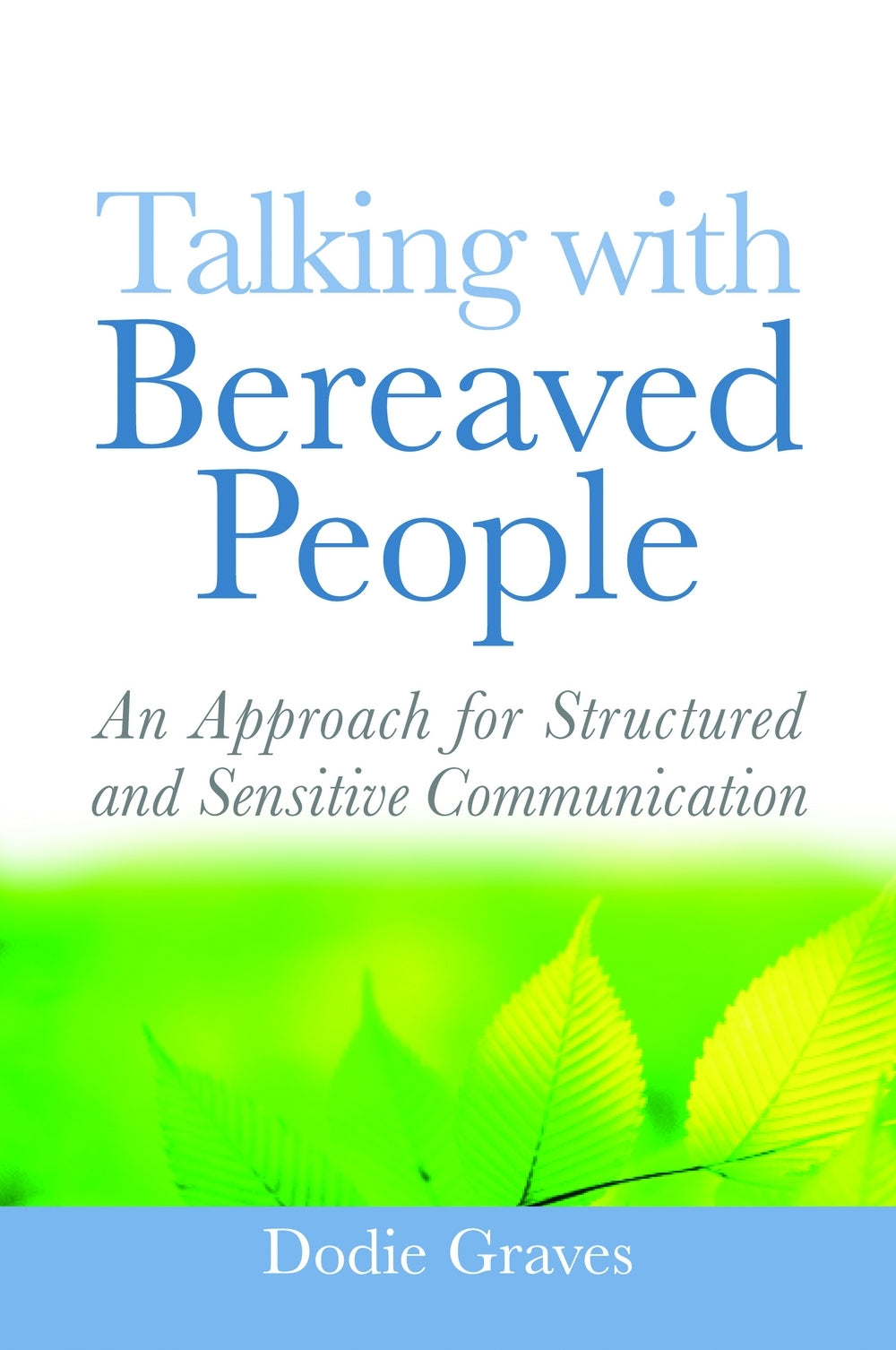
Press Reviews
Nursing Standard
I wish his book had been around at the beginning of my career... It contains compassionate, practical wisdom on talking with people who are bereaved and will be useful to a wider readership than bereavement volunteers... This is a must-have book for libraries and those working with the bereaved in any setting.
British Journal of Social Work
To call this volume a "hands-on" book captures of the heart of it, but does not do it full justice. Its author, an experienced bereavement counsellor, seeks to offer guidance and wise advice about an area of people-work that is always challenging yet strangely rewarding in equal measure: how do you talk with someone who has been bereaved? Graves deliberately adopts a conversational style throughout the book, so that on every page, the reader feels a direct link with her. She speaks from a wealth of professional and personal experience that gives her book a validity and authenticity.
Counselling Today (NZ)
the value of this book is that it is an up-to-the-minute, insightful and comprehensive compilation of experience and knowledge in the field of bereavement counselling... It is well suited to a wide rage of readers, from people new to the topic of bereavement work through to experienced counsellors. It would be a particularly useful resource for people training counsellors and bereavement support workers, and a valuable addition to Institutions' libraries.
Therapy Today
This book is essential reading for people who offer support to the bereaved. Anyone seeking to increase their understanding or deepen te quality of their relationship with bereaved people will also gain a great deal from it. The author has made an excellent contribution to the field of thanatology.
Professional Social Work, Bridget Penhale, Reader in Gerontology
The structure of the book and chapers mean the text is accessible and easy-to-read. The use of vignettes, examples and brief exercises are effective and the framework provided for communication is helpful...This is a usful book that will be of interest to the range of individuals (and agencies) that work with individuals who have been bereaved.
Jane Murray, Bereavement Co-ordinator, Marie Curie Hospice, Solihull, Birmingham
I found this book to be very appropriate for me in my role as a counsellor coordinating a hospice-based bereavement support service, and also as a trainer and supervisor of volunteers. It was very easy to read and digest, and I particularly like the style of writing. I really felt I was with the author having a conversation. I felt included, and questions I had seemed to be pre-empted and explained or clarified the further I read. The dialogue was punctuated with personal and volunteers' experiences, which allowed for further explanation of the points being talked about. The invitations to the reader to do an activity or reflection were natural and I felt I wanted to do them, not that I should do them- this element I think will be most helpful for volunteers. The six dimensions, again are simple, clearly explained and easy to understand and carry out, I think even a bereaved person reading this book would find it helpful or useful in their journey. Explanations of core models and theories are easy to read and understand for all levels of reader. An excellent book which prompts development of existing knowledge whilst encouraging and inspiring new volunteers in their conversations with bereaved people.
Diana Rivers, independent counsellor, supervisor and consultant trainer for bereavement services
This book is like all the best things in life: Common sense mixed with insight and experience. It is backed with the theories necessary for every academic subject that in my opinion, in bereavement work should be read, ingested and put to the back of our minds to be drawn upon when needed, but not at the expense of experience. Dodie Graves has made Talking with bereaved people look an easy work, but that is because she has the expertise needed to make it look that way. She has used her wide knowledge of the field, experience of bereaved people, excellent listening skills and sensitivity, along with the intelligence to know how much of each ingredient needs to go into the mix. This book is suitable for people working in the bereavement support field on a good many levels. For new volunteers it is accessible, easy to understand and the use of case studies and personal anecdotes brings it to life. On the other hand, qualified counsellors with experience of general work, perhaps in doctors' surgeries or counselling agencies, would find so much to help them understand what makes bereaved people think and behave as they do. It will also reassure those who are unused to the vast differences in reactions to grief that there are very few occasions when a bereaved person's emotional or physical behaviour can seriously be called unusual or complicated. Given time, patience and a good listener, most people have the inbuilt resilience to work their way through their grief. Dodie encourages this and shows how, with her help, we could all walk beside bereaved people on their journey.
